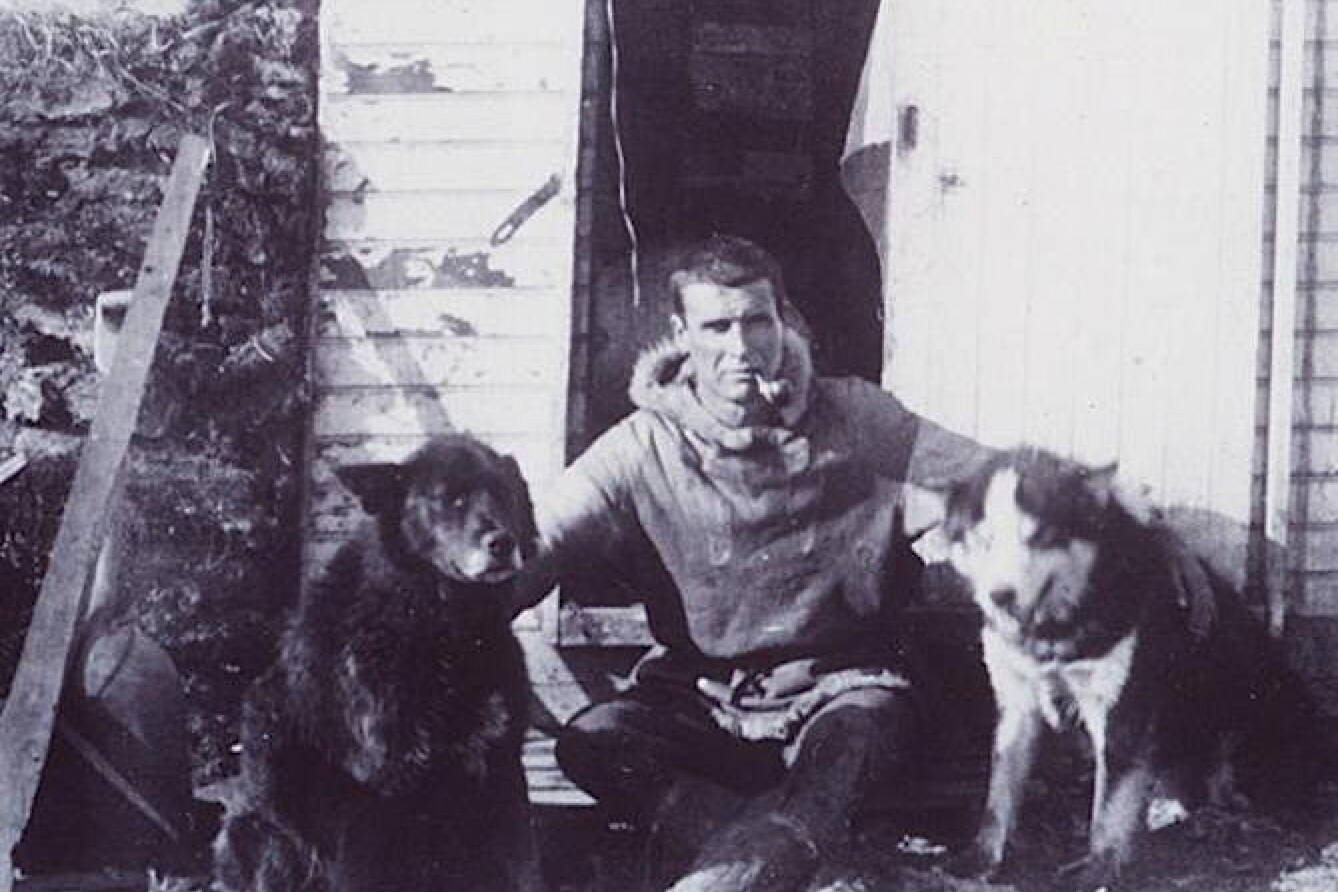One hundred years ago, a group of men sailed to the northern coast of Alaska to find a land mass rumored to protrude from the Arctic Ocean. They did not find the land. After wintering in the north everyone hurried back to warmer places. Except for Ernest Leffingwell.
Leffingwell, a geologist, teacher, and a veteran of the Spanish-American War, stayed behind on Flaxman Island, a sandy wedge of land north of Alaska’s coast and 58 miles west of Kaktovik. He lived for nine summers and six winters in a cabin made from the ship that brought him there in 1906.
From that lonely base, Leffingwell made 31 trips around the area by sled and small boat, covered about 4,500 miles, and camped in a tent “about 380 times.” This detail he included in a 250-page report for the USGS that reads like a manual on how to live and perform science in the far north. The work has gained him some fans.
“He wasn’t a traditional scientist,” said permafrost scientist and world traveler Kenji Yoshikawa. “He was more like an early explorer from the 18th century.”
“Unlike his counterparts of the time who were mostly looking for glory and doing only enough science to support that, Leffingwell quietly wandered on his own, dedicating himself to a better understanding of this interesting place,” researcher Matt Nolan once said.
In addition to taking photos of things that interested him, Leffingwell wrote down observations of everyday life, including dogs’ reactions to wearing packs made of sealskin (“A good dog will pack half his weight all day, but he does not enjoy it.”), and the prevailing opinion about polar bears (“Locally they are regarded much as wolves are in cattle country.”)
Leffingwell must have loved Alaska’s far north, because he stayed there long after expedition money ran dry. His father gave him some funds to help with his dream, and he also earned a few thousand dollars by selling furs. He even tried whaling with Native crews in the spring of 1910.
“A full-grown whale was worth nearly $10,000 at the prevailing price of $5 a pound for whalebone,” Leffingwell wrote in his USGS paper, “The Canning River Region, Northern Alaska.”
Local Natives on and near Flaxman Island and some white prospectors in the country taught Leffingwell how to survive in the area.
“At Flaxman Island, during the summer of 1907, about 400 eider ducks and brant were stored in the icehouse for winter consumption,” he wrote in his customary passive voice.
His favorite meat was caribou, but in lean times anything would do.
“Seal and polar bear are not appetizing when one has recently eaten caribou,” he wrote, “but after a period without meat of any other kind for comparison they form a welcome addition to the table.”
Leffingwell shared the local Natives’ preference for fur clothes over wool.
“At first the (fur) clothes are uncomfortably warm, so that one perspires freely, but after a few months the skin becomes accustomed to the heat, so that a man in good physical training will perspire much less than when dressed in woolen clothes,” Leffingwell wrote.
Leffingwell named the Sadlerochit formation (the reservoir of the Prudhoe Bay oilfield), and wrote about oil seeps that inspired government officials to create what is now the National Petroleum Reserve-Alaska. He also took photos of rocks on Flaxman Island he thought glaciers had dropped, though geologists thought there had never been glaciers in the area. Scientists found ancient glacial ice not far from Leffingwell’s camp.
“He made the first (detailed) map of the coast, and he was the first guy to explain ice wedges; you can still use his definitions today,” said permafrost expert and consultant Torre Jorgenson. “One hundred years later we’re still rediscovering things he discovered.”
• Since the late 1970s, the University of Alaska Fairbanks’ Geophysical Institute has provided this column free in cooperation with the UAF research community. Ned Rozell is a science writer for the Geophysical Institute. This column originally ran in 2009.

